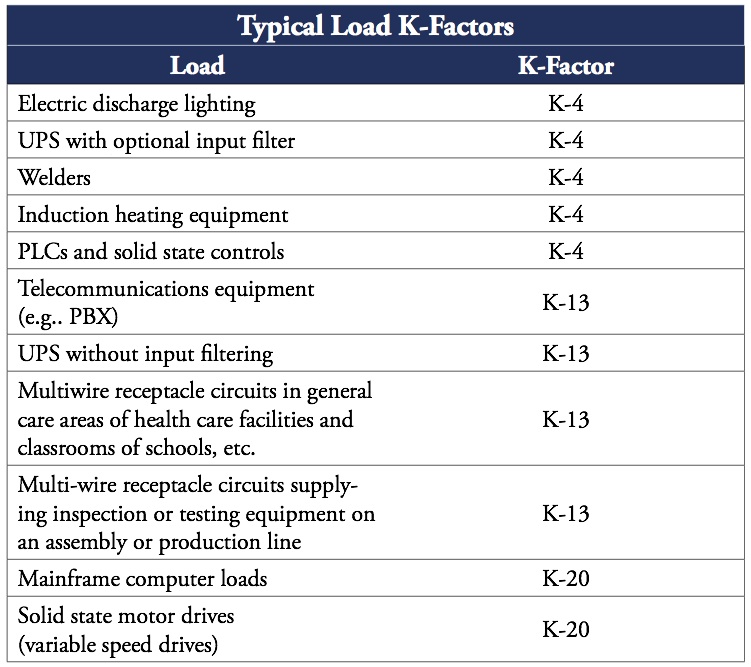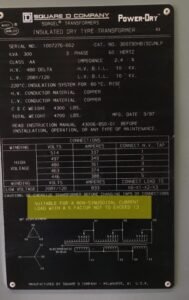K Factor Rated Transformers
Transformers are an essential component of electrical systems. K factor rated transformers, in particular, have gained a lot of attention in recent years. This type of transformer is designed to handle non-linear loads, making them a popular choice for commercial and industrial applications. In this article, we'll explore k factor rated transformers in more detail and their benefits for electrical systems.
Pain Points Related to K Factor Rated Transformers
Electrical systems are becoming more complex, and non-linear loads are becoming increasingly common. These loads can cause distortion in the electrical system and lead to equipment failure. K factor rated transformers are designed to eliminate these issues and improve power quality. They are particularly useful for systems with variable frequency drives, UPS systems, and other non-linear loads.
What is K-Factor Rated Transformer?
A K factor rated transformer is a transformer that is specifically designed to handle non-linear loads. Non-linear loads produce harmonic content that cannot be handled by standard transformers. The K factor rated transformer is designed to mitigate the effects of these harmonics and provide stable power to the load. The "K factor" refers to the ability of the transformer to handle the harmonic content of the load. A higher K factor rating means that the transformer can handle more harmonics.
Benefits of K Factor Rated Transformers
K factor rated transformers provide several benefits to electrical systems. They can handle non-linear loads more effectively than standard transformers, which leads to improved power quality. This means that equipment is less likely to fail, and the system as a whole is more reliable. K factor rated transformers also reduce the risk of downtime and the associated costs, such as lost productivity and increased maintenance.
K Factor Rated Transformers in My Experience
As an electrical engineer, I have worked with k factor rated transformers on several projects. One project in particular stands out, where we were upgrading the electrical system for a manufacturing facility. The facility had a lot of non-linear loads, including variable frequency drives and UPS systems. We recommended k factor rated transformers to improve power quality and reduce the risk of equipment failure. The results were impressive, and the client was very happy with the outcome.
How to Choose a K Factor Rated Transformer
Choosing the right k factor rated transformer depends on several factors, including the type of non-linear loads in the system and the size of the load. It's important to work with an experienced electrical engineer or transformer manufacturer to ensure that the right transformer is selected for the application.
K Factor Rated Transformers and Efficiency
One concern that some people have about k factor rated transformers is that they may be less efficient than standard transformers. While it's true that k factor rated transformers may have slightly lower efficiency ratings, the benefits of improved power quality far outweigh this drawback. In addition, recent advancements in transformer technology have led to improved efficiency ratings for k factor rated transformers.
Question and Answer
Q: Can k factor rated transformers be used for residential applications?
A: K factor rated transformers are typically not necessary for residential applications. They are more commonly used in commercial and industrial settings.
Q: What are some common non-linear loads that can benefit from a k factor rated transformer?
A: Variable frequency drives, UPS systems, and switch mode power supplies are all examples of non-linear loads that can benefit from a k factor rated transformer.
Q: How does a k factor rated transformer improve power quality?
A: K factor rated transformers are designed to handle the harmonic content of non-linear loads. By reducing the distortion in the electrical system, k factor rated transformers improve power quality and reduce the risk of equipment failure.
Q: Do k factor rated transformers cost more than standard transformers?
A: K factor rated transformers are typically more expensive than standard transformers, but the benefits of improved power quality and reduced downtime make them worth the investment.
Conclusion
K factor rated transformers are an excellent choice for electrical systems with non-linear loads. They provide improved power quality and reduce the risk of equipment failure, making them a popular choice for commercial and industrial applications. When selecting a k factor rated transformer, it's important to work with an experienced electrical engineer or transformer manufacturer to ensure that the right transformer is selected for the application.
Gallery
An Introduction To K-Rated Transformers - Electrical Business

Photo Credit by: bing.com / rated transformers introduction nonlinear conventional
What Is K-factor Rated Transformer?

Photo Credit by: bing.com /
K Factor Rated Transformer, के रेटेड ट्रांसफार्मर, के रेटेड

Photo Credit by: bing.com / transformer rated factor indiamart
THE K-FACTOR TRANSFORMER | Power Quality In Electrical Systems

Photo Credit by: bing.com / factor transformer rated transformers electrical systems power quality
K Factor Rated Transformers By MGM Transformer Company

Photo Credit by: bing.com / factor rated transformer
0 Response to "K Factor Rated Transformers"
Posting Komentar